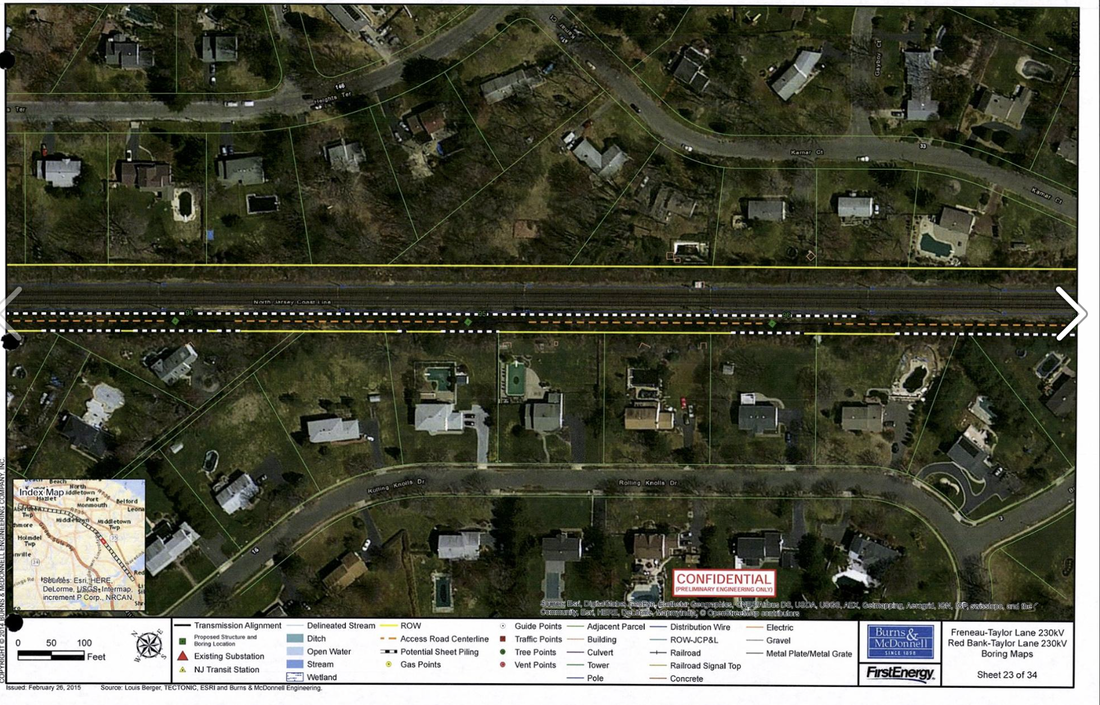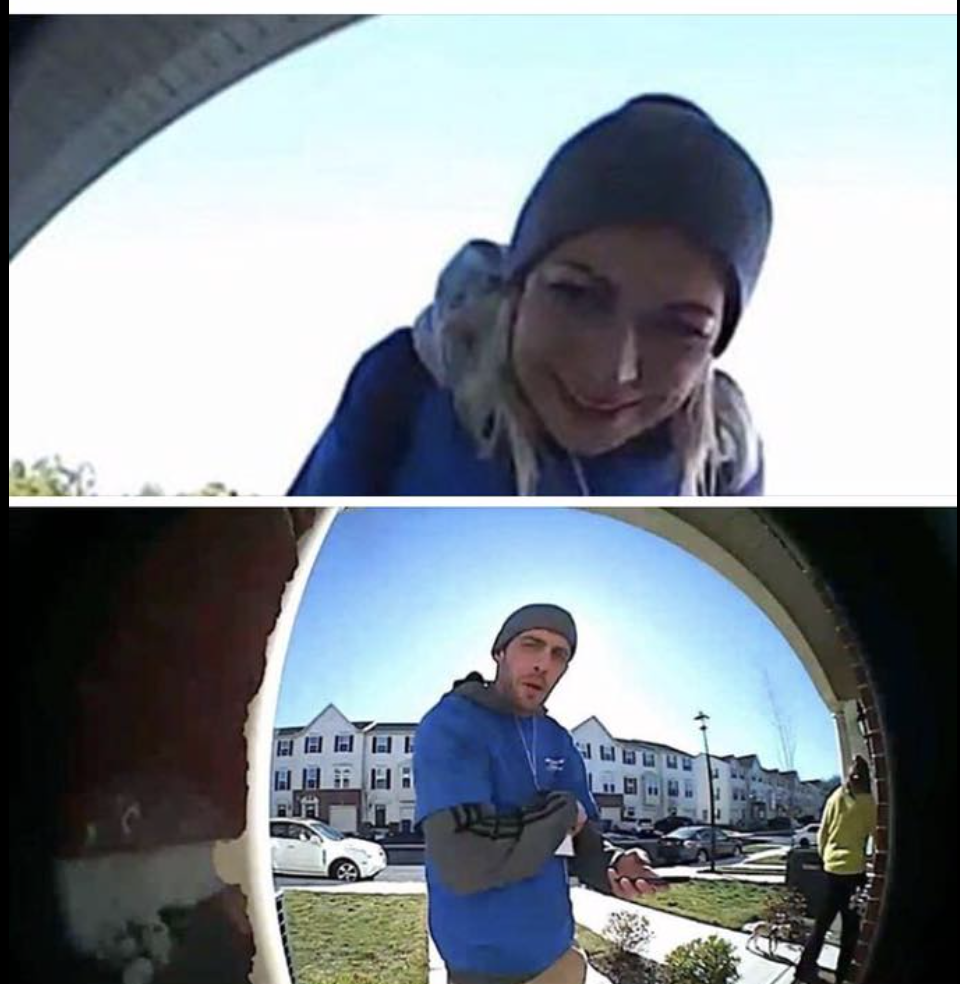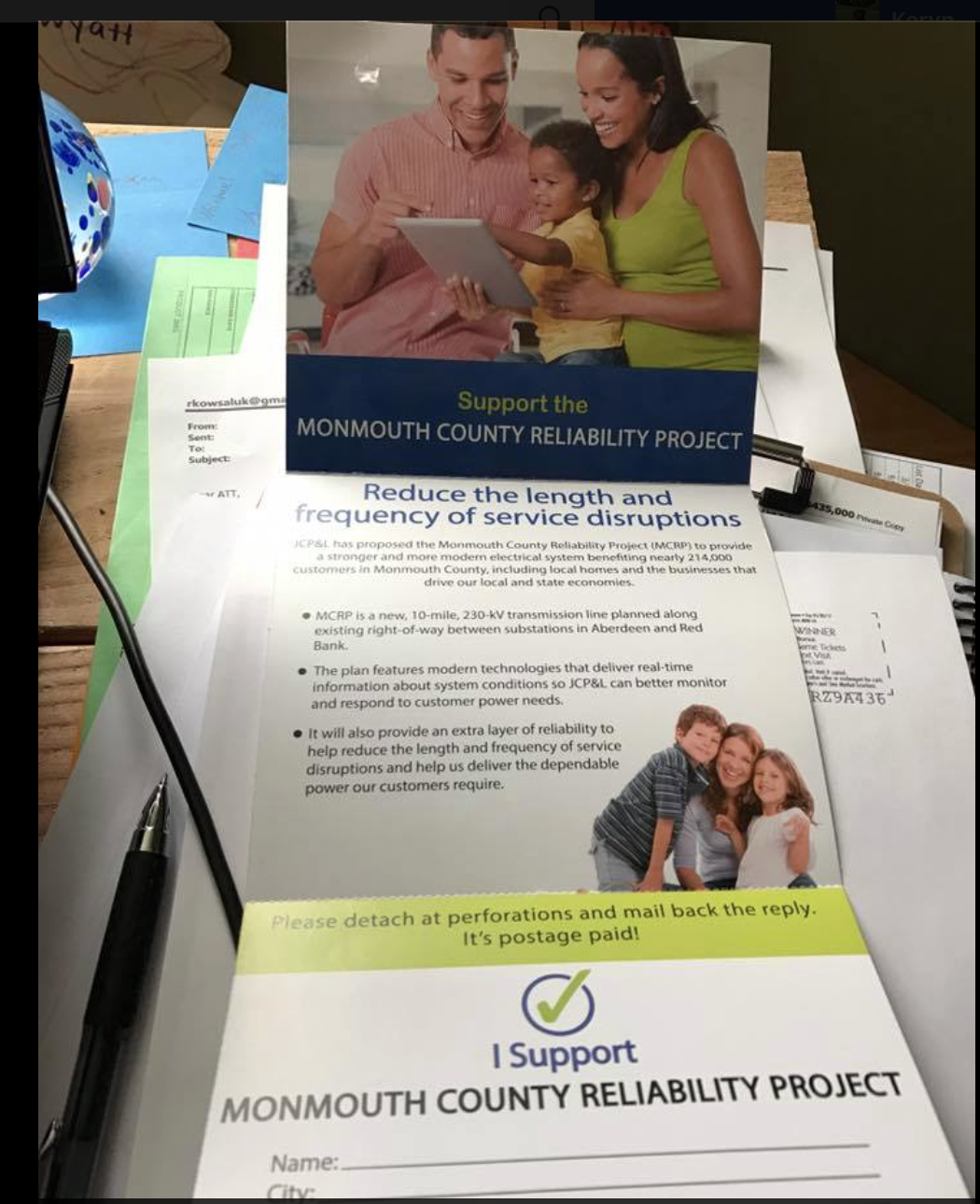More than 3,000 people showed up for the hearing at a local community college over the course of the evening, all of them opposed. The comments were heart felt and heart wrenching. The people told their stories to the judge. The people rocked this hearing!
Everyone was wearing a sticker. The stickers said, "My name is..." followed by that particular person's distance to JCP&L's proposed transmission line.
Among the sea of red t-shirts, jackets, hats and signs were small, blue stickers, each handwritten with a different number. It was a description, in feet, of how far their home was situated from a proposed JCP&L power line poles. For some, it was a couple thousand feet. For others, it a few hundred feet. And there were those whose number was expressed in two digits.
But let's go back to those numbers... two digits? People will be living less than 100 feet from power line poles if this project is built? How could that happen if a transmission line is properly sited on sufficient right-of-way? JCP&L's proposed project is 230kV. A quick google search shows that "typical" right-of-way width for 230kV transmission lines is 100-160 feet. Utility American Electric Power gets a little more specific in its "Encroachments on Transmission Rights of Way" document. AEP says typical rights of way for 230kV lines are 120-150 feet in urban areas, and 150 feet in rural areas. AEP also cautions:
Buildings, building extensions and additions (homes, businesses, garages, barns), swimming pools, above ground fuel tanks, tall signs or billboards, tall trees, obstructions and mounding of soil in the right of way are encroachments that are prohibited.
Now let's look at JCP&L's proposal. The company proposes:
[a] minimum of a 60 ft. wide corridor will be cleared (30 ft. from either side of conductor or approximately 45 ft. from centerline of the poles on the rail side and 15 ft. from centerline of the poles on the opposite side/vacant side of pole).
JCP&L will clear the NJT and JCP&L ROW to the specified width in accordance with the FirstEnergy Initial Clearing of Transmission Lines Specification and the FirstEnergy Detailed Property and Provision List. Trees located outside the ROW which are deemed Priority Trees shall be removed. Priority Trees are defined as trees located adjacent to transmission corridors that are dead, dying, diseased, structurally defective, leaning or significantly encroaching, where the transmission facilities are at risk of arcing or failing should the tree or portions of the tree (1) fall into or near the transmission facilities; or (2) grow into or towards the transmission facilities. JCP&L will obtain the necessary rights from applicable property owners before removing trees and vegetation both on and off the ROW.
Watch a video featuring views of the actual rail right of way here. Does it look like there's room to install a transmission line on that right of way? It doesn't to me.
JCP&L's plan is insane! This isn't your typical "not in my backyard" reaction to a transmission line.
And consider that the "violation" this project is supposed to fix is rather minor -- to provide a third back up in case existing lines fail. There has to be a better way!
What were you thinking, JCP&L? It's only a 10-mile line... it won't gather much opposition... and these folks already live next to a set of train tracks. They won't notice or care?
They do care, very much. Opposition has been huge and fierce. FirstEnergy's usual playbook tactic of creating the appearance of support for a transmission project to "balance out" opposition before regulators has massively failed. At Wednesday night's public hearing, not one person giving comment supported this project. JCP&L said,
“This meeting tonight was to hear what the public had to say,” said JCP&L spokesman Ron Morano. “We elected to not have any supporters speak at this event.”
I'm having a hard time believing that. Did JCP&L waste all this time and money trying to buy advocacy only to submit a sanitized list of names of "supporters" to the BPU at a later date? Or did the BPU finally call JCP&L out on all this nonsense and suggest that it not "elect" to have its supporters speak at the public hearing for fear that it may cause a riot?
So, public hearing safely in the can. JCP&L lost big time in the court of public opinion. Was democracy in action enough to sway the judge to recommend modifications to, or outright denial of, JCP&L's project? Time will tell. Formal evidentiary hearings before the judge begin next week.
You can follow along to find out the ultimate disposition of this horrific utility plan by liking Residents Against Giant Electric (RAGE) on facebook here and here. And you just might find yourself wanting to join in this community's RAGE against FirstEnergy.



 RSS Feed
RSS Feed